by Amanda Gibbs
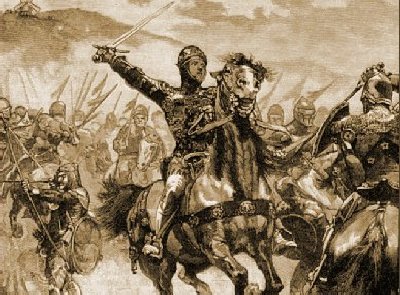 "The Black Prince" |
Prince Edward of England was called "the Black Prince." He was born on June 15, 1330 and died on June 8, 1376. He was the eldest son of Edward III of England and the father of Richard II. He was one of England's ablest military commanders in the Hundred Years War. His nickname probably was derived from the color of his armor, but nobody knows for sure.
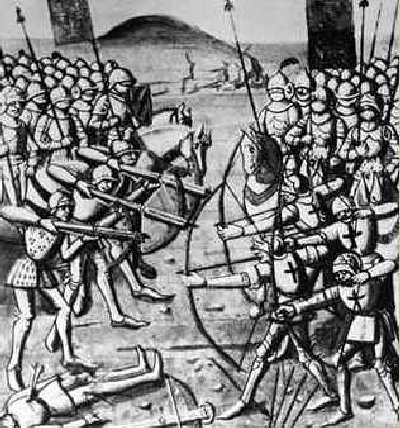 Battle of Crecy (Medieval wood etching) |
The English victory at Crecy (or Cressy) in France on August 26, 1346, was the first battle on the continent where an English army fought mainly as infantry and used the English Long bow against mounted knights. Although the English armies had been fighting as infantry in their wars with the Scots, the French had never seen it and at Crecy their mounted men were shown to be powerless against the deadly English archers. After the battle the English Long bow became the most deadly weapon of its time.
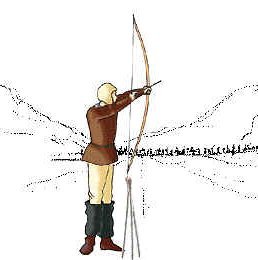 Feared English Long bowman |
The English army was commanded by King Edward III of England and his son the Black Prince. The French were under Philip VI of France. At the battle the small English army of 10,000 defeated the French army of 24,000. The French losses were eleven princes, 1,200 knights, and 8,000 foot soldiers, a total greater than the entire English army.
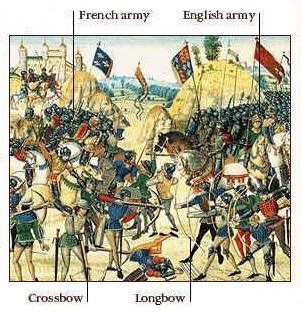 Use of Crossbow and Long bow at Crecy |
Prince Edward commanded the English forces again at the Battle of Poitiers in 1356. At the Battle of Poitiers 7,000 English defeated 18,000 French, under King John II of France. The English took up strong positions behind lanes and vineyards with their long bowmen. The French cavalry, charging up the lanes, and were hit with showers of English arrows. The English knights and men-at-arms were then charged from the flank and routed the French who lost 8,000 men. King John was taken prisoner and ransomed for £500,000. The English losses were very light.
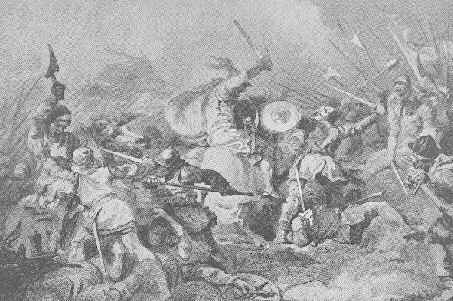 The English Victory at Poitiers in 1356 |
In 1362, Prince Edward was made ruler of Aquitaine, an English principality in France. (see map below) In 1367, he invaded Spain and won a victory at Najera. In 1370, after a revolt of his French subjects, he sacked the City of Limoges. The Black Prince had become the most feared military commander in Europe.
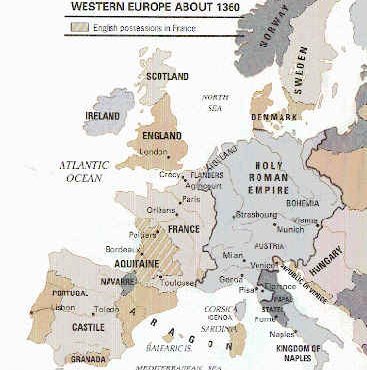 Map of Western Europe - 1360 |
Unfortunately, while fighting in Spain, Prince Edward caught an infection that caused his early death in 1376. Prince Edward, The Black Prince, died before he could become king, but his son Richard inherited the English throne. If Edward had lived, he eventually may have become one of the great conquerors in history.
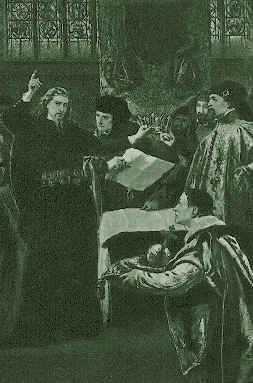 Richard II of England abdicates his throne. |
Unfortunately, Richard II later turned out to be a very unpopular ruler and in 1399 he had to give up his throne, but that's another story.
| sources: | Barber, Richard. Edward Prince of Wales and Aquitaine: A Biography of the Black Prince. 1978 |
| Burne, Alfred H. The Crecy War 1976 | |
| "Compton's Battles of the World." (Multimedia CD-ROM) Cambridge: SoftKey International, Inc., 1966. | |
| Emerson, Barbara. The Black Prince. 1976 | |
| "Eyewitness History of the World." (Multimedia CD-ROM) New York: Dorling Kindersley Multimedia, 1995. | |
| "Mediasource Historical Library." Volume 1 (Multimedia CD-ROM) Westchester, PA: Applied Optical Media Corp. | |
| "Multimedia World History." (Multimedia CD-ROM) Parsippany, NJ: Bureau of Electronic Publishing, Inc., 1994.+ |